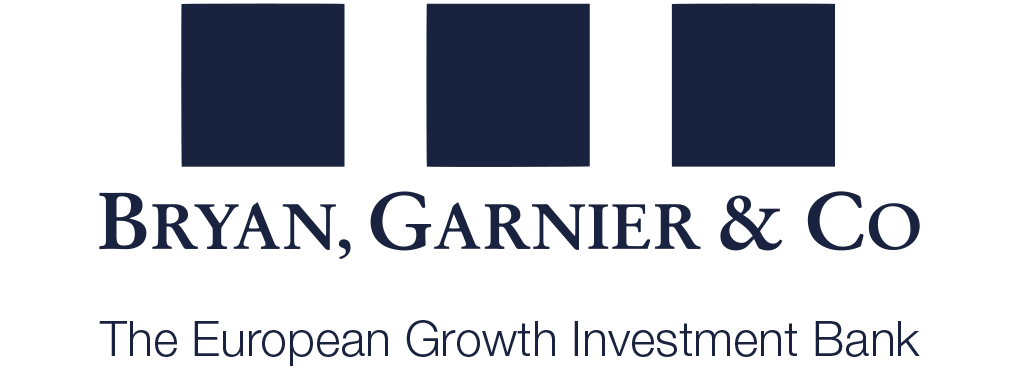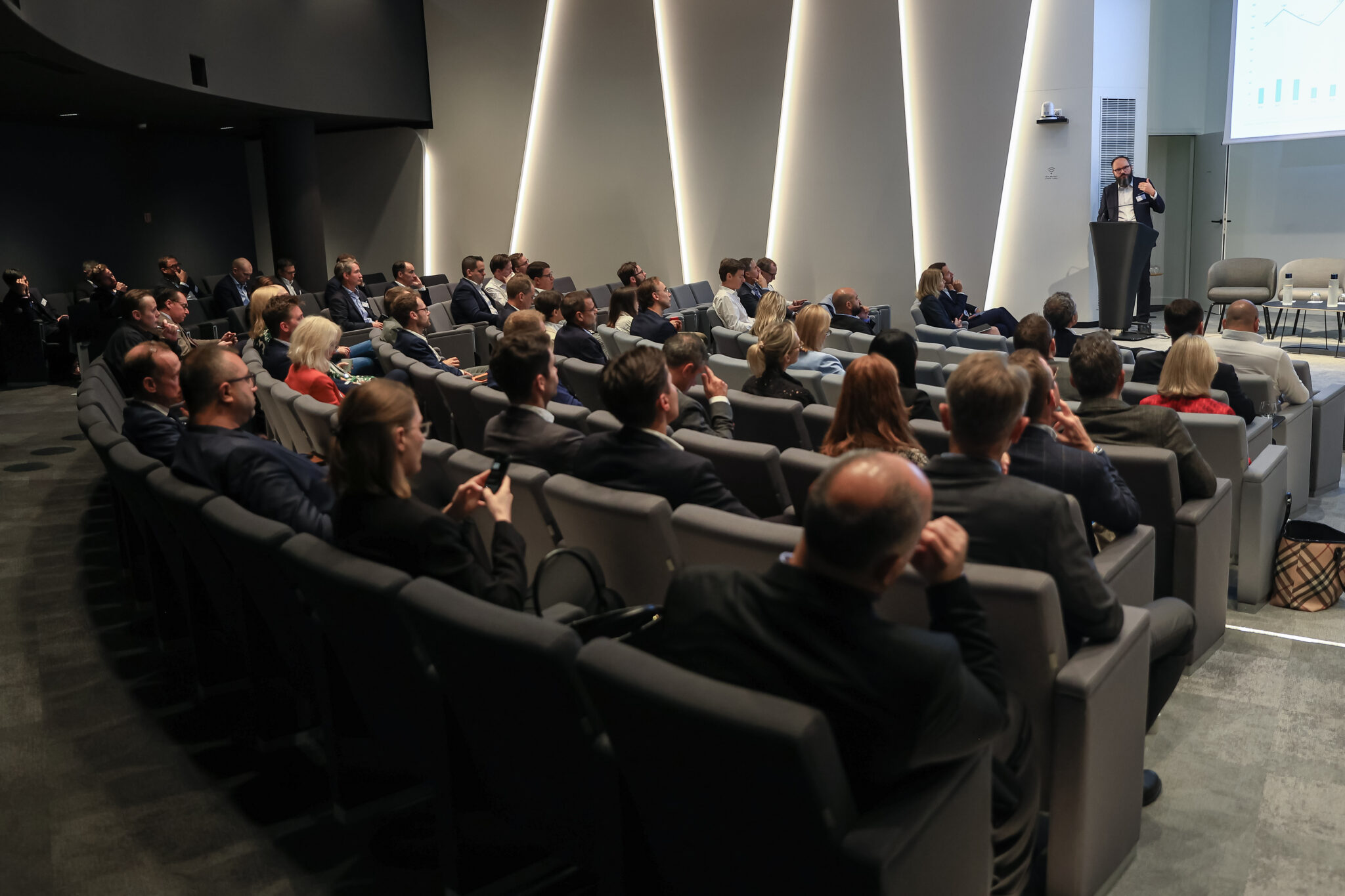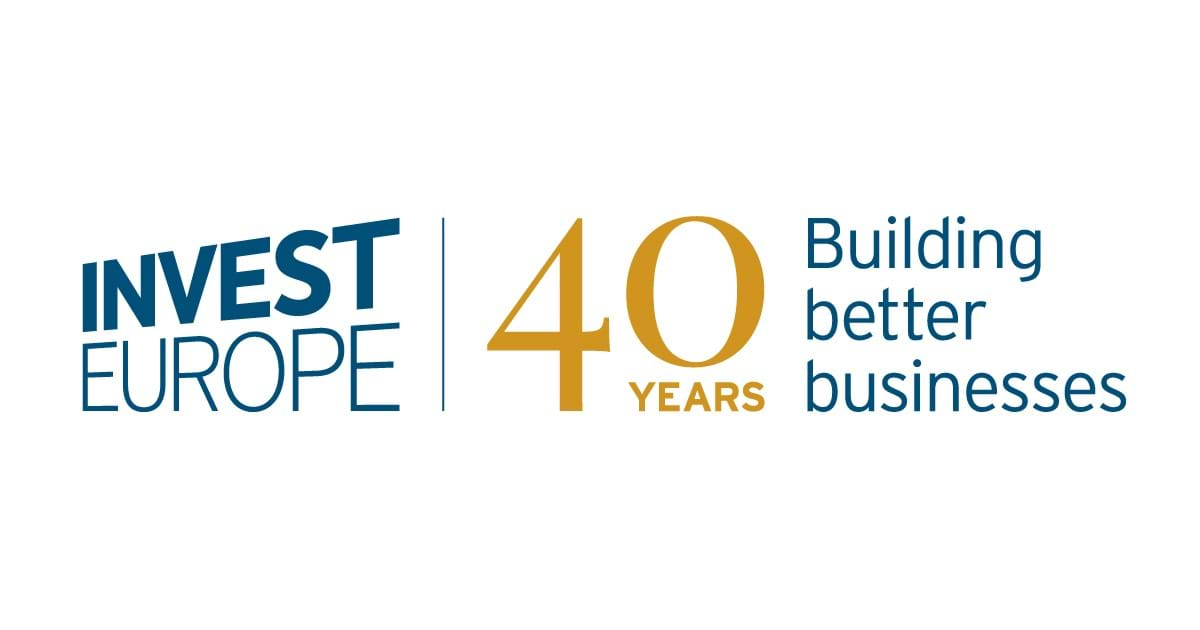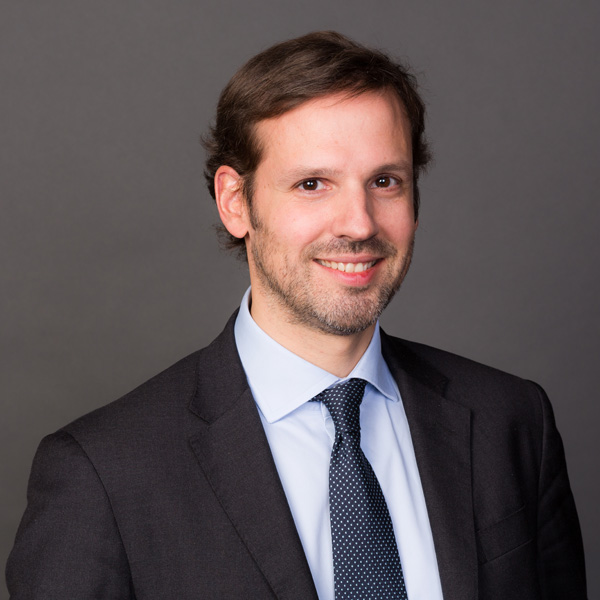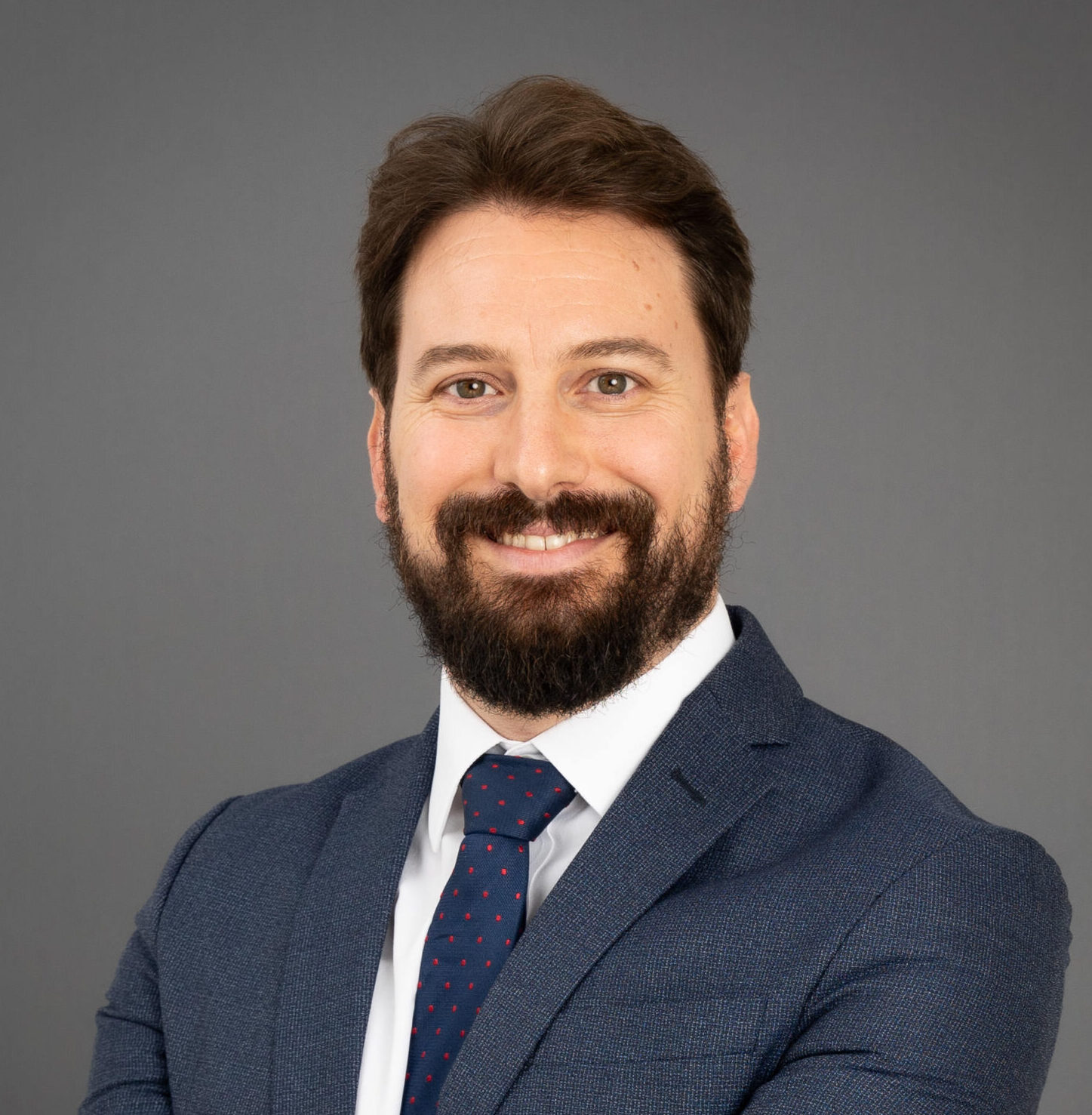15 Award winners with innovative climate and green technology solutions at the Tech Tour Growth Sustainability 2023 in Essen
Bryan Garnier is pleased to partner with Tech Tour at their flagship Growth Sustainability 2023 event held in Essen from 27-29 November. The event showcased 95 of Europe’s most promising companies specializing in climate and green technology solutions. These companies were carefully selected for their growth potential from a pool of over 1,000 applicants. Among them, 15 award winners were selected during the event for their innovation and cutting-edge solutions.
The event featured 45 Program Winners from 7 specialized Tech Tour Programmes in sustainability, chosen by a panel of 400 investors from 250 presenting companies. An additional 50 Growth companies in the energy sector were selected by a panel of 70+ European investors from 150 applications.
Germany led the way with 33 companies, followed by the Netherlands with 11, and both Norway and the UK contributing 7 each. Notable attendees included Falk Mueller-Veerse, Partner & Head of DACH at Bryan Garnier, and Jay Marathe, Managing Director within the Energy Transition & Sustainability Practice at Bryan Garnier, who were present and were part of the jury.
Falk Mueller-Veerse, Partner & Head of DACH at Bryan, Garnier & Co comments: “This year, German companies have led the way with 33 companies out of the 95 selected from a pool of over 1000 applicants. Germany is home to innovative growth companies in climate and green technology solutions that are still flourishing in tumultuous times. Events such as the Tech Tour Growth Sustainability act as growth accelerators to these companies, exposing them to investors who might lead the next rounds of financing they need.”
The event included 15 pitching sessions where Award Winners were selected by over 140 investors. Congratulations to the 15 Award Winners: Strohm, Asperitas, b.fab, BeFC, BuyCo, Dexter Energy Services, JUUNOO NV, Kelpi, Magment, Naco Technologies, NexWafe, renasys, Strohm, Unigy, Woon Duurzaam, and Yeastup.
The Tech Tour Growth Sustainability 2023 was hosted by BRYCK and partnered with esteemed organizations, attracting 300+ participants from 24 countries. The success of the event lies in the interaction and collaboration between companies and investors, reinforcing its role in facilitating investment in technology companies.
Tech Tour, known for connecting tech companies with investors, has facilitated over €20.7 billion in investments in the last 7.5 years. Missed this year’s event? Don’t miss out on the upcoming Tech Tour Growth50 Europe 2024 for another transformative experience! Find out more about the event on the Tech Tour website.
At Bryan, Garnier & Co, we are honoured to be a partner to Tech Tour Growth Sustainability 2023 edition and look forward to celebrating the success of Europe’s most promising tech companies. Learn more about the event on Tech Tour’s post.
BG Growth Series - CARBIOS
bethsabee gresse
Coming Soon
Embark on the remarkable journey of Carbios, a company revolutionising plastic recycling. We sat down with Emmanuel Ladent, CEO, and Philippe Pouletty, founder and president of the board. They’re charting a course to transform the life cycle of PET plastics, attributing value to what was previously deemed as waste.
The 9 million tons of plastic polluting our oceans annually inspired Carbios to give value to the plastic in its pioneering method, which involves exclusive enzymes that break down PET plastics, converting them into 100% recyclable materials, thereby fostering a circular economy for plastics.
Carbios‘ focus isn’t solely on PET plastics; they’re working on providing enzymatic solutions for other types of plastics, leading the way in radical innovation.
Carbios leaders direct key messages for growth entrepreneurs, including the importance of continuous news flow and timing financial markets. Act decisively, propel your mission, and articulate your vision clearly.
The company’s approach underscores the significance of seizing opportunities and maintaining continual progress.
Bryan Garnier has played a pivotal role in supporting Carbios’ mission and successful capital raises, advising Carbios since the outset through 4 successful strategic growth transactions, including the latest €141m capital raise.
Carbios turned a scientific concept into tangible industrial activity within their demonstration plant. Their ambitions extend to establishing bio-recycling plants worldwide within the next decade.
Join us in this episode of the BG Growth Series and witness the evolution of plastic recycling as Carbios spearheads sustainable change.
Get in touch
Whether you’re at the outset seeking funding, or an established firm searching for strategic options, our team will provide you with tailored advice to help you reach your goals.
Our transactions
Bryan, Garnier & Co offers a complete range of investment banking services, from growth financing to mergers and acquisitions.
Venture Capital Forum 2023 with Invest Europe
Navigating in Times of Uncertainty
Invest Europe’s 2023 Venture Capital Forum was a resounding success, and we were delighted to once again lead as the primary sponsor. Our continued partnership with Invest Europe underscores our unwavering commitment to supporting growth companies at every stage of their financial journey and helping them navigate the complex landscapes of Venture Capital and Private Equity.
This year, our Managing Director & Co-Founder, Greg Revenu, took the stage to deliver a keynote address that illuminated the pressing issues and exciting opportunities in the world of venture capital.
Key Takeaways from the Forum
*Greg Revenu’s keynote speech was filled with valuable insights and forecasts for the industry. Here are some key takeaways from the event:
Resilient Growth: Despite the volatility, the Venture Capital industry has experienced remarkable growth throughout the 2020s.
Challenges Ahead: 2023 brings its own set of challenges, including limited exit options and difficulties with Initial Public Offerings (IPOs), which have significant implications for VC fundraising.
Long-Term Resilience: The VC sector has demonstrated its long-term resilience, with both demand and supply steadily increasing. Price adjustments are poised to drive further innovation in this sector.
Adaptation and Diversification: Venture capitalists are adapting by expanding structured growth financing, emphasizing Environmental, Social, and Governance (ESG) factors, and diversifying their capital sources.
Emergence of Private Debt: Private debt has emerged as one of the fastest-growing asset classes in global private equity, signifying a significant shift in investment strategies.
Exit Uncertainties: While the reset phase is nearing completion, uncertainties regarding exits continue to loom over the industry.
During the conference, Greg Revenu was joined by our Head of Private Capital Markets, Julien Polenne, to chair the event, offering further insights and moderating illuminating panel discussions and Q&A sessions.
Our expert team had a fantastic opportunity to engage with Limited Partners (LPs) and General Partners (GPs) who are shaping the future of VC investment and facilitating growth in innovative companies.
We’d like to extend our sincere thanks to Invest Europe for their ongoing partnership and commend them on yet another successful event.
Invest Europe is the world’s largest association of private capital providers. They represent Europe’s private equity, venture capital and infrastructure investment firms, as well as their investors, including some of Europe’s largest pension funds and insurers. Invest Europe’s aim is to promote a better understanding of private equity that enables our members to invest capital and expertise into improving businesses and generating returns for investors, free from unnecessary regulation and constraints. Invest Europe’s members take a long-term approach to investing in privately-held companies, from start-ups to established firms. They inject not only capital but dynamism, innovation and expertise. This commitment helps create healthy and sustainable companies across Europe, securing millions of jobs and delivering strong returns for leading pension funds and insurers whose members depend on them for their retirements.
Welcome to our Q3 2023 Quarterly Report
Welcome to our Q3 2023 Quarterly Report, carefully curated with topics that we believe will be of interest to our clients and partners. We also share M&A market commentaries and the latest Bryan, Garnier & Co deals in the healthcare, software & fintech, industrial tech, energy transition & sustainability, and business & tech-enabled services sectors. This report, we deep dive on:
- Uncovering the truth behind alternative protein
In a world of information overload, we cut through the clutter to explore the production, feasibility, and implications of the alternative protein industry. Discover how fermentation is transforming the landscape and dispelling common industry myths. - Space: The Final Frontier
With a remarkable 45% YoY increase in space deals leading up to Q3 2023, we delve into the challenges, M&A activity, and market potential of the NewSpace movement. The stars have aligned for exciting opportunities. - M&A deals activity
Gain a deeper understanding of the M&A market in our sectors of expertise and the profound impact of the current macro environment, as our partners provide their invaluable perspectives.
These insights are designed to empower investors looking to navigate the ever-evolving market trends.
Download the report and stay ahead of the curve. Have questions or want to explore opportunities further? Contact us at communication@bryangarnier.com and let us advise you through your growth journey or help you spot the best investment opportunities.
Get the report
Please complete the form below to receive the report.
3min Insights - Agronutris
bethsabee gresse
Welcome to “3-Minute Insights,” a new series showcasing innovative companies, products, and technologies that are shaping the future of key industries.
We sat down with Mehdi Berrada, Co-Founder and President of Agronutris, to talk about the company’s journey from startup to a pioneering biotech company operating a 16,000 square meters industrial insect plant in Rethel, France.
Bryan Garnier & Co acted as the sole financial advisor for Agronutris in successfully raising €100 million, marking a significant milestone in their journey. Mehdi has shared the success of our partnership, built on strong human relationships, industry knowledge, and unwavering determination for success.
Earlier in 2023, BioMar and Agronutris signed a long-term partnership to develop the next generation of black soldier fly meals specifically designed for the aquaculture industry.
Our interview with Mehdi delves into the exciting world of Alternative Proteins and AgTech, providing insights into the latest industry trends, including the dynamic landscape of Aquaculture and the integration of insects into human eating habits.
But Agronutris is about more than just food; it’s about transforming our approach to consumption and production, ushering in a brighter, more sustainable future for all of us.
Bryan Garnier & Co. shares in this vision, committed to supporting innovative companies in the Alternative Proteins sector and beyond. As a partnership with a strong entrepreneurial mindset, Bryan Garnier puts entrepreneurs at the heart of every operation. Our client’s success is our success.
Join us on this transformative journey as we explore the future of food and sustainability.
Get in touch
If you are operating in high-growth sectors focusing on solving sustainability challenges, our team will provide you with tailored advice rooted in deep sector knowledge.
Our transactions
Bryan, Garnier & Co offers a complete range of investment banking services, from growth financing to mergers and acquisitions.
BG Growth Series - Shark Solutions
bethsabee gresse
BG Growth series - SHARK Solutions
Welcome to the “BG Growth Series”, where entrepreneurs tell us about their inspiring stories, share invaluable insights, and offer practical tips to navigate the growth journey.
We sat down with Jens Holmegaard, the visionary founder of Shark Solutions, a global pioneer in sustainable PVB products. His journey began with a car – kind of.
Inside every windshield since 1930 lies a polymer laminate, and a significant portion of it goes to waste every year. Jens Holmegaard asked the obvious question, “Why are we throwing away so much valuable material?”
Jens, a mechanical engineer with a Ph.D. from the Technical University of Denmark, decided to tackle this challenge head-on and turned it into an opportunity to drive sustainability. Shark Solutions has developed a unique technology that separates the components of windshields, allowing them to be recycled into new products.
However, the journey to success wasn’t linear. Jens shares his experience and emphasises, the importance of patience, seeking the right partners, and the role persistence plays in the entrepreneurial journey.
Just like a pilot in a car race, no entrepreneur can succeed alone. Jens tells us about the importance of working with partners and cites Bryan Garnier as a relevant example when it comes to seeking investors.
Our clients, like Jens, are addressing some of the world’s most pressing sustainability challenges. Our sector-driven advice, rooted in deep industry knowledge, global perspective, and full-service platform, is designed to accelerate their long-term success.
Join us in this Episode of the BG Growth Series as we dive into the incredible journey of Jens Holmegaard and Shark Solutions, and discover how faith, persistence, and innovation have resulted in a successful venture working towards building a more sustainable world.
Get in touch
Whether you’re at the outset seeking funding, or an established firm searching for strategic options, our team will provide you with tailored advice to help you reach your goals.
Our transactions
Bryan, Garnier & Co offers a complete range of investment banking services, from growth financing to mergers and acquisitions.
BG Growth Series - Waga Energy
bethsabee gresse
Welcome to the “BG Growth Series”, where entrepreneurs tell us about their inspiring stories, share invaluable insights, and offer practical tips to navigate the growth journey.
We sat down with Mathieu Lefebvre, Nicolas Paget, Guénaël Prince, three visionary engineers and co-founders of Waga Energy. Their vision? “Biomethane as pillar of the energy transition.”
Waga Energy’s groundbreaking technology – the WAGABOX®, converts landfill gas into biomethane, a carbon-neutral gas which can be used as a renewable substitute for natural gas or injected into the gas grid, offering a sustainable solution for waste management and reducing greenhouse gas emissions.
Learn about their challenges, their moments of triumph, and their relentless drive to make a difference. Discover how their trust in their team and their shared purpose fueled their success, enabling them to scale up their product from small landfills in France to expand to seventeen WAGABOX® units, secure contracts with major waste management companies and local authorities, with ongoing expansion across the USA, Canada, France, and Spain.
Working with Bryan Garnier for the IPO was a fast track to success according to Waga’s co-founder Mathieu Lefebvre. Bryan Garnier notably played a crucial role in convincing the board that Waga Energy was IPO ready.
Waga Energy’s destination is crystal clear; they’ve already saved more than 100,000 tonnes of CO2 from entering the atmosphere, but they’re just getting started.
Join us on this captivating journey and experience how Bryan Garnier, the world’s leading independent full-service investment bank for European healthcare and technology-led companies, contributes to shaping a sustainable future, by partnering with companies like Waga Energy. Bryan Garnier’s commitment to long-term success, deep industry knowledge, and global perspective enable companies to accelerate their growth and make a lasting impact.
Watch this episode of BG Growth Series to learn about Waga’s growth journey and IPO experience.
Get in touch
Whether you’re at the outset seeking funding, or an established firm searching for strategic options, our team will provide you with tailored advice to help you reach your goals.
Our transactions
Bryan, Garnier & Co offers a complete range of investment banking services, from growth financing to mergers and acquisitions.
Rising Stars: Beyond the hype
PARIS October 11th, 2023 – BG IRIS, Bryan Garnier’s research platform, is pleased to release the “Rising Stars: Beyond the hype”, a comprehensive analysis of the space sector and underlying M&A market activities.
NewSpace is not just a buzzword; it’s a transformative force redefining the space industry. In this ever-evolving landscape, private capital is surging, innovation cycles are shrinking, and commercial applications are multiplying. To help investors stay ahead of the curve, we present our analysis of the NewSpace potential and underlying market activities.
Within this comprehensive white paper, we guide investors through the NewSpace landscape, unveil the prevailing trends, and assess the genuine opportunities that lie beyond the hype. Our analysis uncovers challenges and expert opinions that will shape the industry’s future.
We find that while the tech sector’s investment pace has moderated, NewSpace remains resilient. Although capital is becoming scarcer, this shift is leading to more solid grounds for investing. Governmental support remains pivotal, fueled by concerns over sovereignty. The potential for commercial applications remains promising.
To dive deep into this topic and discover how NewSpace is poised to shape the future of the space industry, request the white paper.
Get the white paper
Please complete the form below to receive the report.
Bryan Garnier Expands in London with Addition of Debt Advisory Director
LONDON, 4 OCTOBER 2023 – Bryan, Garnier & Co, the leading investment bank for healthcare and technology-related companies has announced that Nicolas Bucci has joined the Bank as a Director of Debt Advisory in London.
Nicolas joins from Société Générale in London, where he was a Director in the Leveraged Capital Markets team. Nicolas has over a decade’s experience in the leveraged debt capital markets, specifically originating, structuring and executing high yield bond mandates. Nicolas was covering both sponsor-owned and corporate issuers for transactions ranging from small refinancing to multi-billion acquisition financing. He holds a Master’s in Financial Engineering from Université Panthéon Sorbonne in Paris, France.
Greg Revenu, Co-Founder and Managing Partner at Bryan Garnier & Co, said: “In the current economic climate, our clients need sophisticated financing solutions more than ever before. Nicolas’s appointment is a testimony of our commitment to deepening our debt advisory and capital markets offering. His expertise across global markets ensures that our clients receive advice that is tailored to their financing requirements.”
Nicolas Bucci, Director of Debt Advisory at Bryan Garnier, said: “The focus on collaboration and teamwork at Bryan Garnier to execute challenging and complex transactions is inspiring. I am thrilled to have the opportunity to apply my experience in the leveraged debt markets to develop the debt advisory business and contribute to delivering a comprehensive product offering for clients in some of the most exciting growth sectors in the economy.”
Bryan Garnier is a leading pan-European full-service investment bank. Our debt advisory track record includes transactions such as EasyVista’s unitranche financing by BlackRock; Abivax’s €49 million cross-over financing; Kayrros €15 million venture debt financing; Arturia’s €80 million TLB loan and Agronutris’s €40 million asset backed financing.
Bryan Garnier’s holistic approach to advising clients on the full range of equity, debt and M&A transactions creates a true client-first model, building long-term relationships over the full business lifecycle. As a sector-focused bank since inception, Bryan Garnier specialises in Healthcare, Software & Fintech, Energy Transition and Sustainability, Industrial Tech, Business and Tech-Enabled Services and NextGen Consumer. Bryan Garnier’s mission of investment banking for a better future continues to drive the firm as it backs innovative companies and their investors that are providing solutions to some of the world’s most important challenges.
About Bryan, Garnier & Co
Bryan, Garnier’s is a European growth investment bank helping companies in the healthcare and technology related sectors become global champions. By combining deep sector expertise with an entrepreneurial mindset, Bryan Garnier provides companies and their investors with independent growth strategic advice, and leading access to buyers and capital in Europe, US and Asia
As a full-service investment bank, the firm offering includes private and public growth financing solutions, mergers and acquisitions (M&A) advisory, research insights, and institutional sales & execution. Founded in 1996, Bryan, Garnier & Co is an independent partnership with around 200 employees located in major financial centers in Europe and the US.
Bryan Garnier Expands Software Investment Banking team with new Managing Director
LONDON, 28 September 2023 – Bryan, Garnier & Co, the leading investment bank for European technology and healthcare-related companies has announced that Valentin Werlé has joined as a Managing Director in the Software & Fintech Investment Banking team. Based in London, Valentin will focus on cross-border software M&A advisory across Europe.
Valentin has over a decade of experience within the European tech M&A market. Previously at Arma Partners and William Blair, Valentin advised a large number of leading software companies, notably active in fast-growing segments such as HR-tech, EHS/ESG-tech and cybersecurity, on critical sell-side and fundraising assignments, bringing his deep sector knowledge and robust M&A expertise to founders and tech investors alike. He graduated from Institut d’Etudes Politiques and HEC Paris and holds a MBA from INSEAD.
Greg Revenu, Co-Founder and Managing Partner at Bryan Garnier & Co, said: “Our Software & Fintech practice has consistently ranked among the top European mid-market technology advisors with more than 100 transactions advised over the past ten years. We are very pleased to welcome Valentin whose strong track record in the Software sector will contribute to reinforcing our position in this market, with both trade buyers and financial sponsors.”
Thibaut De Smedt, Partner and Software & Fintech practice lead, said: “We are delighted to welcome Valentin at Bryan Garnier & Co. He brings a wealth of experience with more than a decade of experience in M&A, technical expertise in fast growing Software segments and an extensive global network. His appointment will ensure our clients continue to benefit from sector-specific advice and flawless deal execution.”
Valentin Werlé, Managing Director in Bryan Garnier’s Software & Fintech team said: “I’m thrilled to have joined Bryan Garnier’s Software & Fintech Investment Banking team. The company’s long-lasting commitment to software growth companies aligns with my passion for the sector. I look forward to contributing my experience and knowledge to further develop Bryan Garnier’s highly differentiated platform in key European markets.”
Bryan Garnier is a leader in European software deals. Recent transactions include Ripple’s €250 million acquisition of Metaco; Keensight Capital’s investment in eAttestations, an innovative third-party risk management SaaS platform; Hg Capital’s acquisition of smart mobility and field service management software Nomadia; GPI’s €170 million acquisition of leading player in software solutions for digital healthcare transformation Evolucare; and vehicle logistics pioneer Driiveme’s sale of a minority stake to ISAI Gestion.
Alongside Software & Fintech, Bryan Garnier’s core sectors include Healthcare, Energy Transition and Sustainability, Industrial Tech, Business & Tech-Enabled Services and NextGen Consumer. Bryan Garnier’s mission of investment banking for a better future continues to drive the firm as it backs innovative companies and their investors that are providing solutions to some of the world’s most important challenges.
About Bryan, Garnier & Co
Bryan, Garnier’s is a European growth investment bank helping companies in the healthcare and technology related sectors become global champions. By combining deep sector expertise with an entrepreneurial mindset, Bryan Garnier provides companies and their investors with independent growth strategic advice, and leading access to buyers and capital in Europe, US and Asia
As a full-service investment bank, the firm offering includes private and public growth financing solutions, mergers and acquisitions (M&A) advisory, research insights, and institutional sales & execution. Founded in 1996, Bryan, Garnier & Co is an independent partnership with around 200 employees located in major financial centers in Europe and the US.
